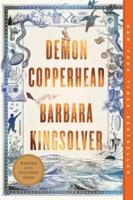Publisher's Synopsis
This historic book may have numerous typos and missing text. Purchasers can usually download a free scanned copy of the original book (without typos) from the publisher. Not indexed. Not illustrated. 1913 edition. Excerpt: ... chapter iii love In spite of Strindberg, Weininger, and other despisers of women, our time has witnessed a rapid increase in man's appreciation of woman's personality. One among many signs of this is that marriages and love affairs between younger men and women who are a few or several years older than themselves, are becoming more and more numerous in our time. Of course such connections have always occurred. But formerly they were due in some cases to the man's gratitude for help or appreciation, in other cases to calculation, to win a kingdom, for instance, an inheritance, or an appointment; sometimes, finally, they were the result of the charm certain women have preserved to an advanced age. What is new in our time is that the cause is more and more frequently mutual love. Stendhal 83 cites Mme. du Deffand, with justice, as a proof that "Vamour passion," which Rahel calls "the new European love," may arise at an advanced age. In our time instances might be multiplied. Love more and more frequently resembles that crocus which flowers in the autumn as well as in the spring. And, to complete the simile, the flower, which is innocuous in spring, is said to be sometimes dangerous in autumn. Nowadays it is no uncommon thing to see a man who, like the young Spaniard Mora for Mile, de Lespinasse, entertains an ardent love for a woman ten years older; or even, like the young Italian Rocca, for one twenty years older than himself. Rocca was seized by this feeling the instant Mme. de Stael bent over the litter on which the wounded youth lay. When his friends told him she was old enough to be his mother, he replied that that was one reason the more for loving her and that he would love her so devotedly that she would end by marrying him, as...










